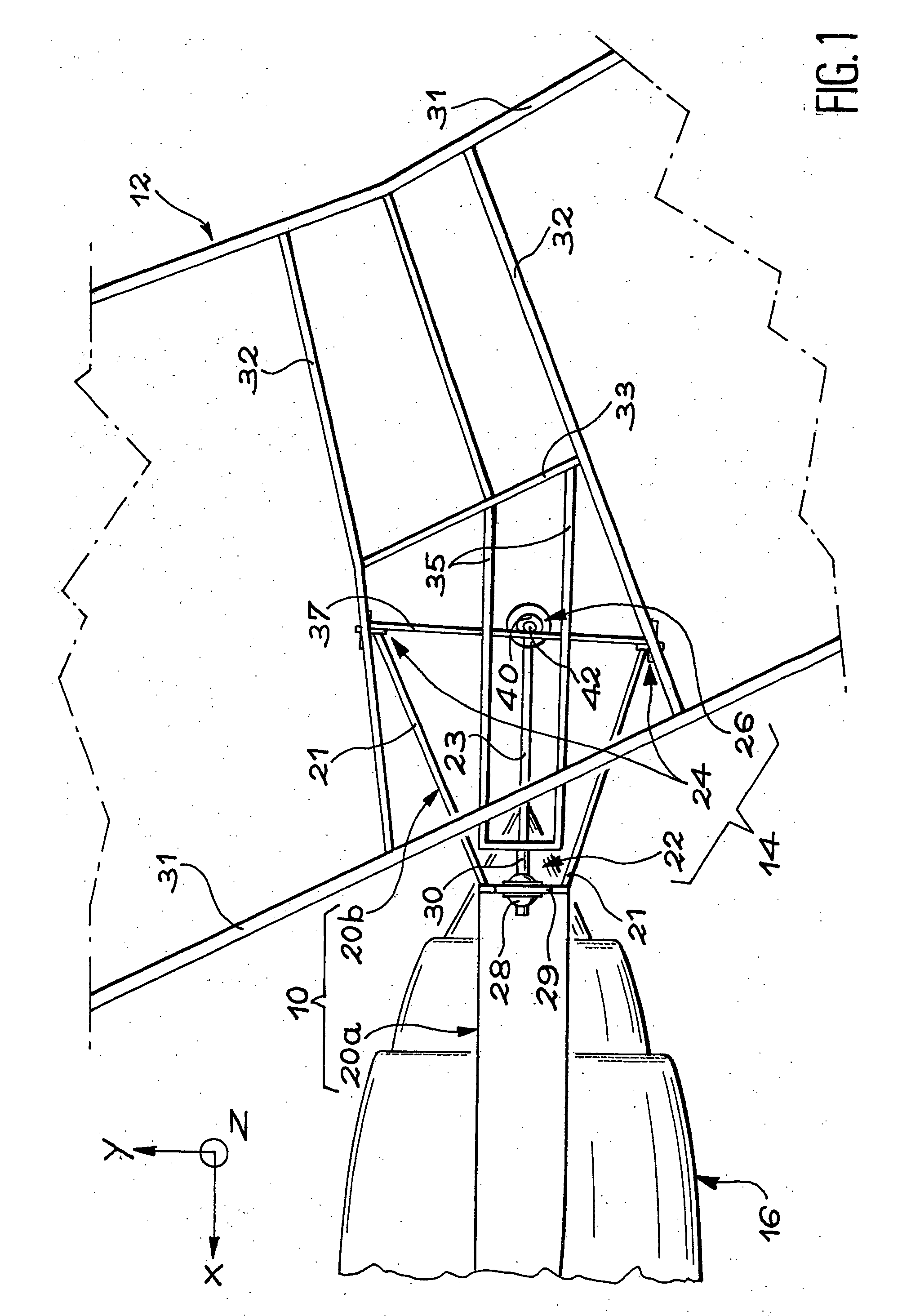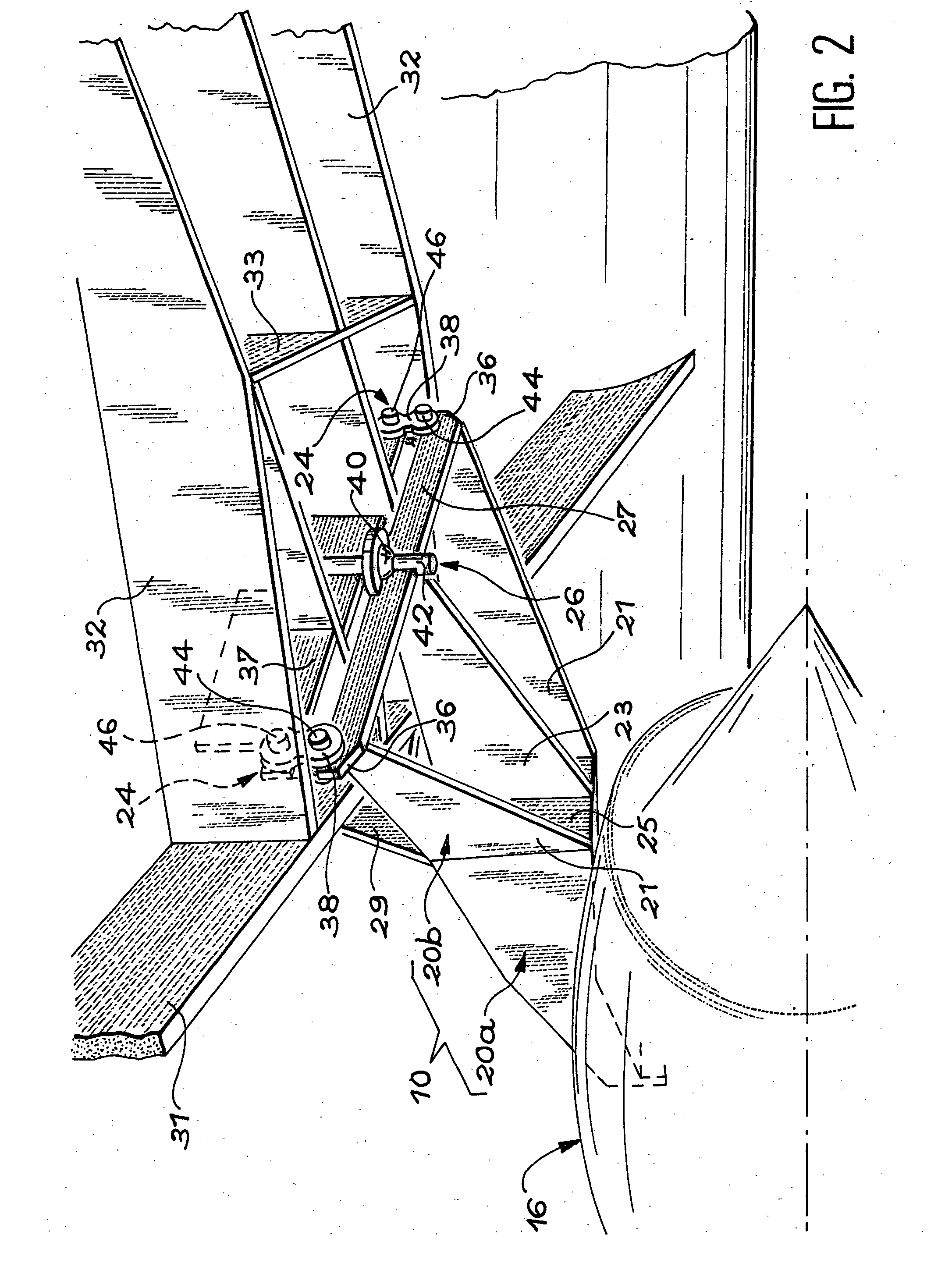Engine pylon suspension attachment of an engine under an aircraft wing section
a technology of aircraft wings and suspension attachments, which is applied in the direction of machine supports, other domestic articles, transportation and packaging, etc., can solve the problems of affecting the implantation of engines of larger diameters, affecting the insertion of engines, and having significant bulkiness in vertical directions, so as to reduce the vertical space requirement of the strut, increase the distance between the joining elements, and increase the size of the fasteners
- Summary
- Abstract
- Description
- Claims
- Application Information
AI Technical Summary
Benefits of technology
Problems solved by technology
Method used
Image
Examples
first embodiment
[0058] Further to the rear brace 36, each of the rear fasteners 24 comprises a joining element which connects each of the rear braces 36 to a structural part of the wing body assembly 12, constituted in this case by the intermediate transverse rib 37. this joining element will be described with reference to FIGS. 2 and 3.
[0059] In this first embodiment, the sealing element of each rear fastener 24 comprises a shackle 38, preferably double, which connects the brace 36 to the wing body assembly 12. More precisely, each of the shackles 38 is oriented substantially in the vertical direction Z and connects one of the rear braces 36 to the intermediate transverse rib 37, in the vicinity of the longitudinal ribs 32. The shackles 38 are located in the same plane YZ and are articulated respectively on the braces 36 and on the rib 37 by first hinge pins 44 and by the second hinge pins 46 oriented in the longitudinal direction X of the engine.
[0060] With the hinge pins 44 and 46 by which it is...
second embodiment
[0074] These drawbacks are eliminated in the invention which will be described with reference to FIG. 5.
[0075] In this second embodiment of the invention, the shackles are eliminated and each of the joining elements comprises a single hinge pin 48, a first piece 50 in the form of a disc and a second piece 52 in the form of a disc, generally identical to the first.
[0076] More precisely, the first piece 50 in the form of a disc is mounted in a cylindrical hole 56 passing through one of the rear braces 36 along a first axis A1 oriented in a longitudinal direction of the engine, such that the first piece 50 can turn freely about this first axis.
[0077] Comparably, the second piece 52 in the form of a disc is arranged in a cylindrical hole 58 which passes through a foot providing the support 54 along a second axis A2 oriented in a longitudinal direction of the engine, such that the second piece 52 can pivot freely about this second axis. More precisely, the foot providing the support 54 i...
PUM
 Login to View More
Login to View More Abstract
Description
Claims
Application Information
 Login to View More
Login to View More - R&D
- Intellectual Property
- Life Sciences
- Materials
- Tech Scout
- Unparalleled Data Quality
- Higher Quality Content
- 60% Fewer Hallucinations
Browse by: Latest US Patents, China's latest patents, Technical Efficacy Thesaurus, Application Domain, Technology Topic, Popular Technical Reports.
© 2025 PatSnap. All rights reserved.Legal|Privacy policy|Modern Slavery Act Transparency Statement|Sitemap|About US| Contact US: help@patsnap.com



